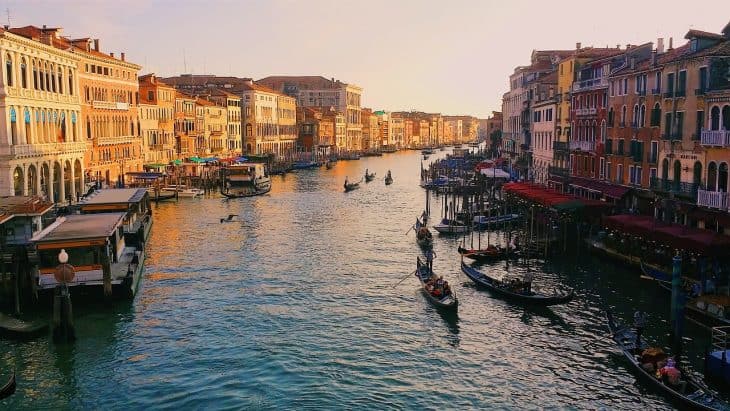
One of the most ideal yet most expensive vacation destinations all over the world is Venice, Italy. Its bridges, canals, gondolas, and other historical attractions are enough to make a romantic swoon. Still, there is more to the city that not everybody knows. Take these Venice facts as inspiration for your next sweet vacation spot.
- Venice is a city in Veneto and is in the northeast region of Italy.
- The Italian name for Venice is Venezia, Italy.
- A total of 118 islands make up the city of Venice.
- People believe that the city was sinking at 1-2 millimeters per year.
- As of January 2020, the population of Venice is 637,245.
- The total land area of Venice is 415.9 square kilometers or 160.6 square miles.
- Venice follows the CEST timezone, just like Verona.
- Of the numerous bridges in Venice, 72 of them are privately owned.
- Despite being spoken in Venice, the Venetian is not an Italian dialect.
- The Venice Tramway, a single rail tram/bus, is a vehicle with both rubber tires and a single guide rail.
- The name of the first woman to earn a Gondolier license in Venice is Giorgia Boscolo.
- More than 450 palaces stand in Venice.
- A Chief Magistrate which people call ‘Doge of Venice’ has led Venice for a thousand years.
- Venice stood as Europe’s cultural and commercial link with Asia, making it the greatest seaport back in late medieval Europe.
- Along with its lagoon, Venice was recognized as a UNESCO World Heritage Site in 1987.
- Venice, Italy inspired the name of the country of Venezuela.
- The first Venice newspaper sold for 1 Gazzetta, compelling a lot of papers today to use the name ‘Gazette.’
- Calletta, the narrowest street in Venice, is also one of the narrowest in the world at 53 centimeters wide.
- Venetian folklore seals forever the love of couples who would do a ‘gondola kiss’ when passing underneath each bridge.
- During the Renaissance, several Venetian artistic movements played significant roles in the history of operatic and symphonic music.
Venice, Italy is also called the ‘City of Canals.’
Other names for the beautiful city are ‘City of Bridges,’ ‘City of Masks,’ ‘City of Water,’ ‘La Dominante,’ ‘La Serenissima,’ ‘The Floating City,’ and ‘Queen of the Adriatic.’
The city of Venice was founded as early as 421 AD.
The history of Venice starts from the Celtic people called ‘Veneti’ who dwelled along the coastline of modern-day Northeast Italy. They had been Roman citizens since 49 BC, but then Attila the Hun invaded Italy in 453 AD. Terrorized, some Veneti fled to the lagoon islands where they built a village and formed a liberated federation.
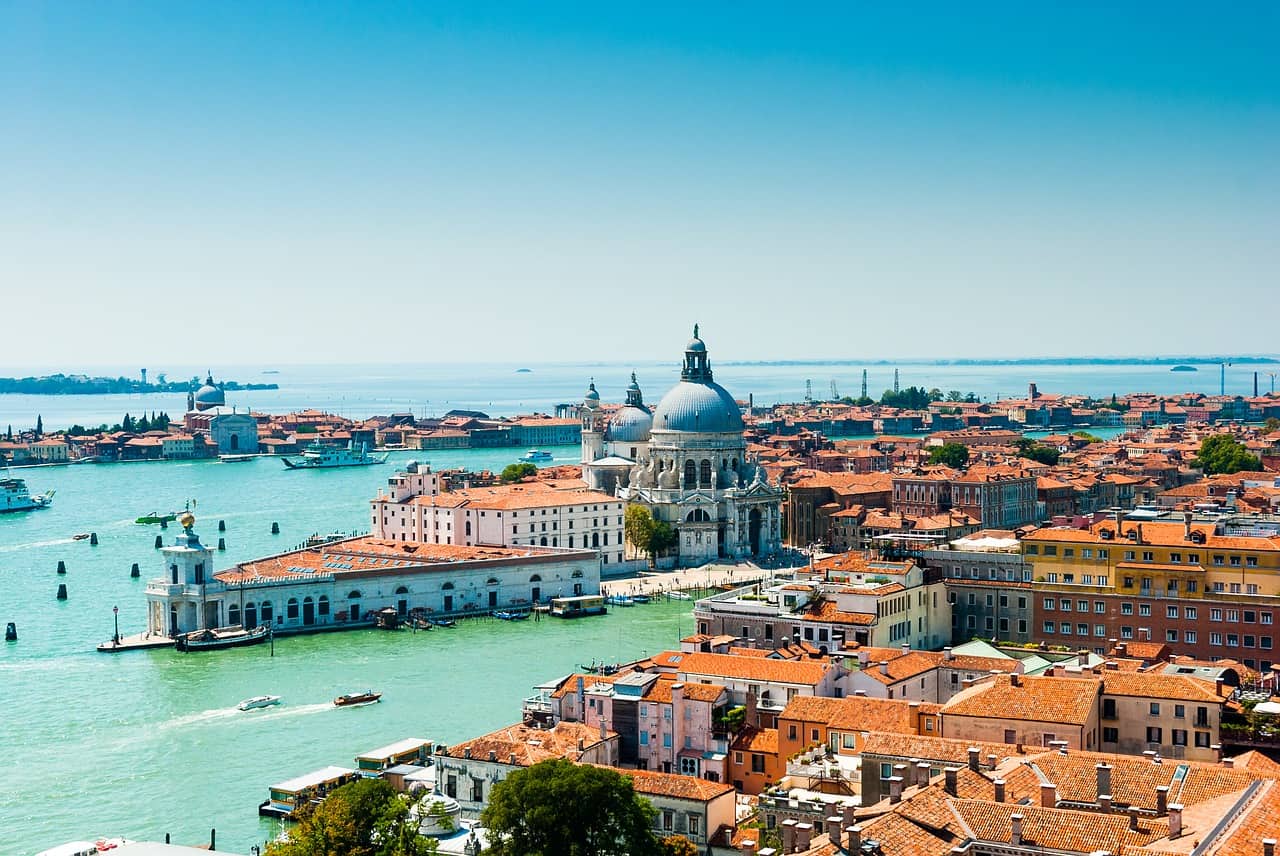
Venice, Italy stood as the ‘Pleasure Capital of Europe’ back in the 1720s.
All kinds of vices could freely entertain the city as long as they boosted tourism. The city became a mandatory Grand Tour stop where men, mostly English, traveled. Among the famous attractions are gambling houses, beautiful courtesans, and the famous Carnival.
The first-ever air raid in history was on August 22, 1849, and involved Venice.
Austria sent pilotless balloons that bore bombs over the lovely city. While some balloons detonated as intended, others circled back over the Austrian lines.
Historically, Venice was once the capital of the Veneto region.
Back then, the region was the Republic of Venice, a sovereign state. It was also the maritime republic in northeastern Italy. However, it only existed from the 7th century until the 18th.
Venice City was initially built to make the lagoon fit for occupancy.
The early settlers drained the lagoon areas and dug canals which they lined with spaced wooden stakes through the sand to the clay beneath. Then, these stakes served as the foundation for the wooden platforms and stone upon where the old and new Venetian buildings stand.
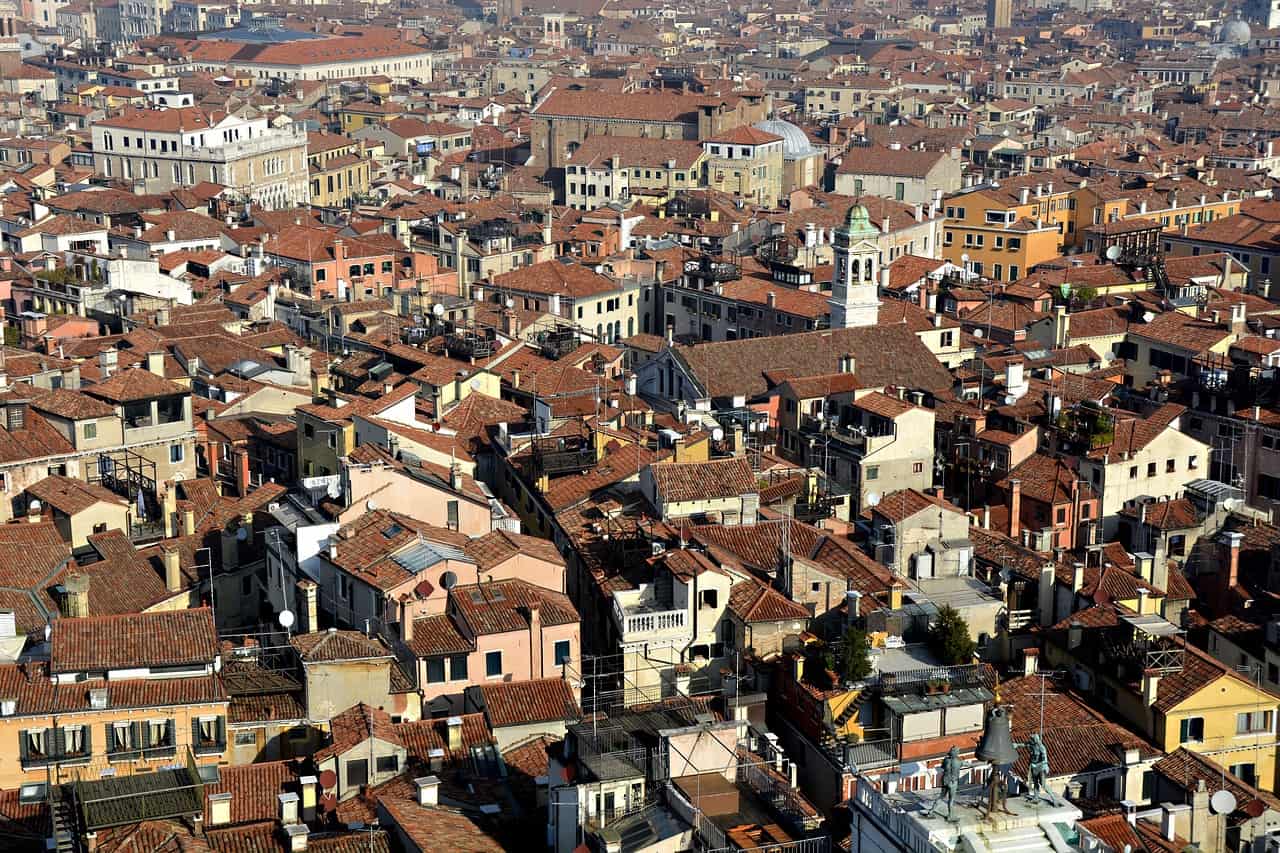
Venice used to operate sortitions in choosing who would take office.
It means that the politicians for the government are picked through the lottery. Still, this system holds credit for the success of the city during the Middle Ages.
In 2008, the population of Venice dwindled to less than 60,000.
Tourism was high but so was the rent even for the locals. Back then, the residents held a public funeral for their beloved nation.
The main mode of transportation in Venice is the Vaporetto boat.
This water public transport moves on the Grand Canal and could take passengers to Burano, Lido, Murano, and Torcello. Specifically, the Vaporetto line 1 is ideal for exploring the city as it stops at every station of the Grand Canal.

Exactly 391 bridges are open in Venice, Italy.
These bridges connect together all the 118 islands of the city. Counting the Giudecca, the correct number would be 403 which crosses a total of 150 canals.
Four major bridges cross over the Grand Canal, but one is already beginning to decay.
What makes it more interesting is that it is the newest one that shows signs of fade unlike the other three that are already centuries old.
The biggest canal in Venice is the Grand Canal.
It divides the city into two main regions while 170 buildings line both of its sides.
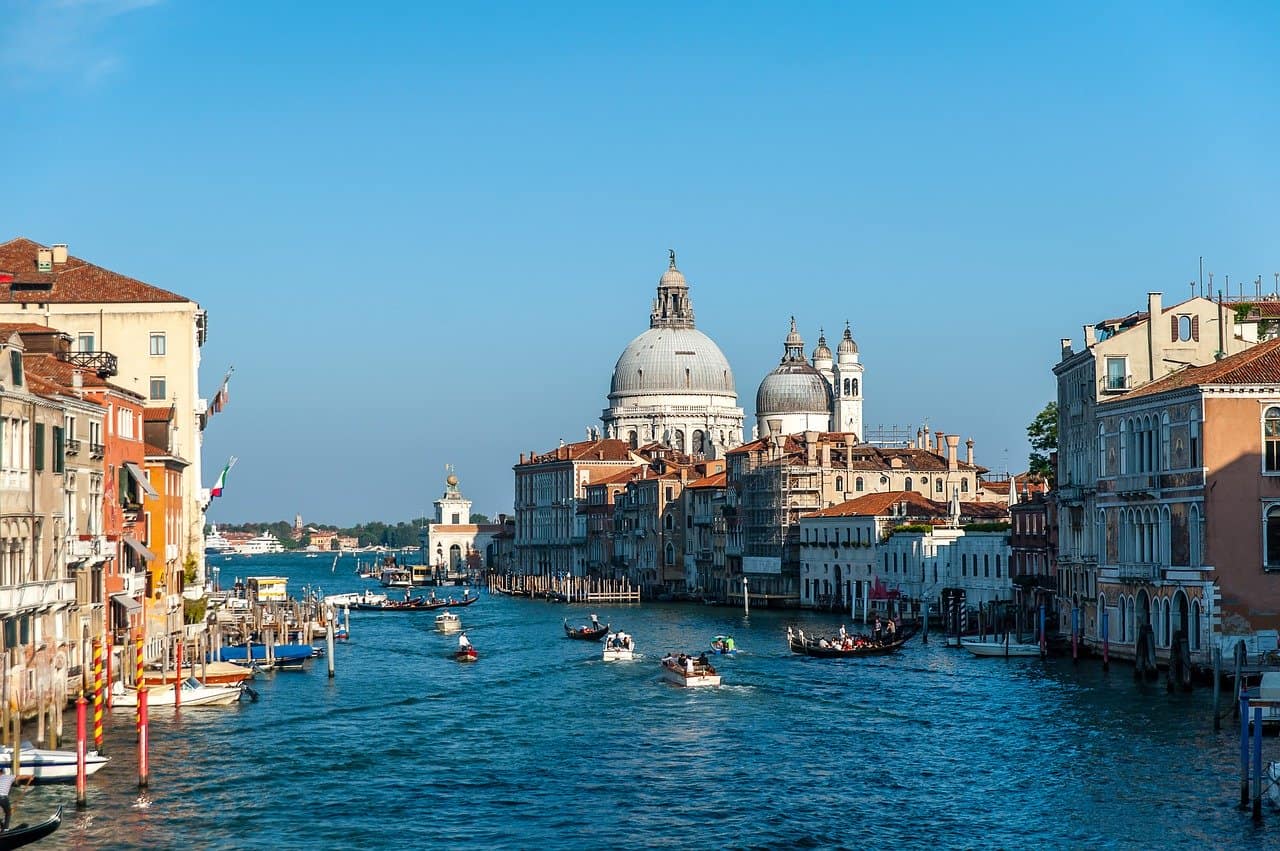
Before, Venice bridges were made of wood and flat in shape.
This model was easier to cross especially for horses that pull carriages when they are still allowed to travel in the city. Around the 16th century, the bridges started to take form in arches with the majority built in stone.
The first stone bridge in Venice was built on June 10, 1337, next to San Barnaba Square.
At this rate, the bridge was centuries behind the construction of the first wooden bridges in the Rialto area.
The oldest of the four bridges over the Grand Canal is the Rialto Bridge.
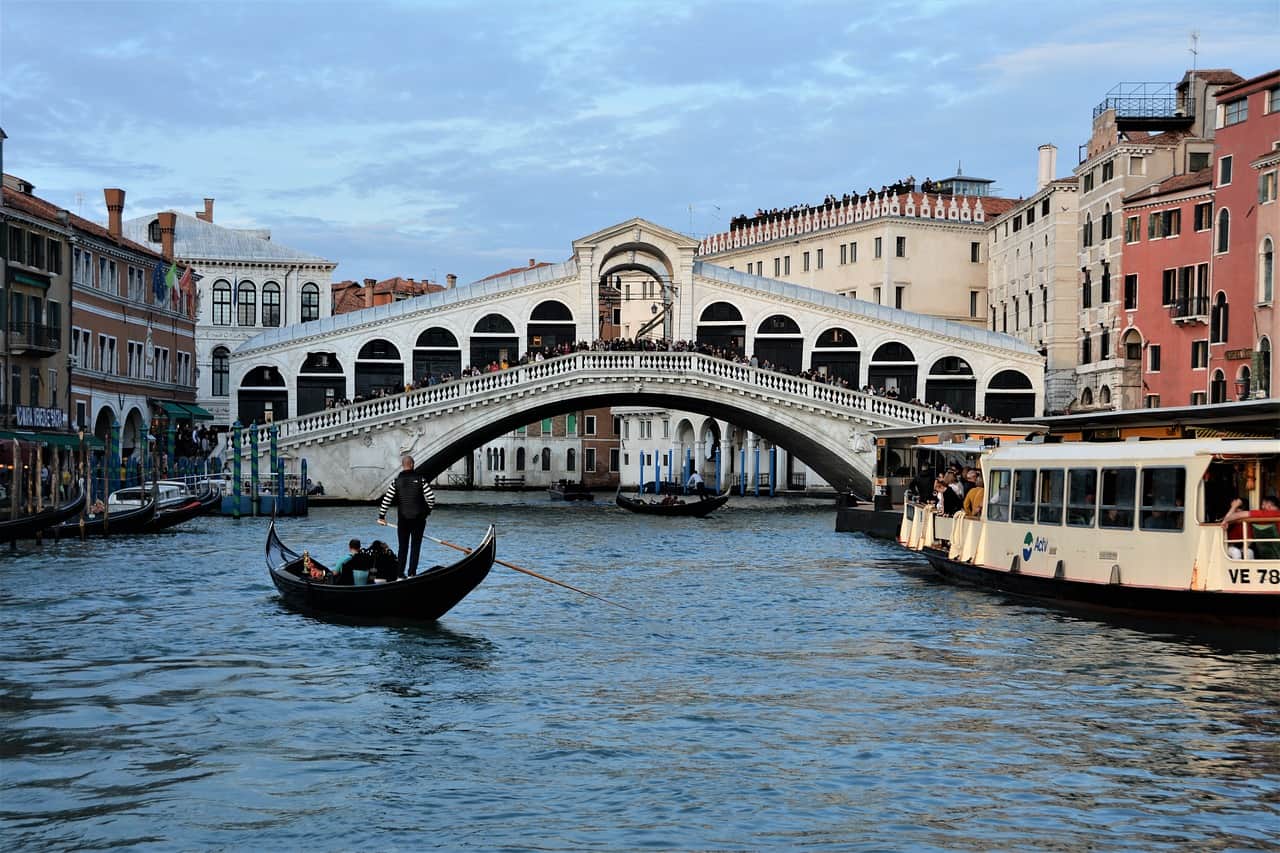
Also known as the Italian Ponte di Rialto, the stone-arch bridge stands right in the heart of Venice. It connects the opposite sides of the narrowest region of the Canal. The modern-day bridge retained its original design from 1255 with recognition as an architectural and engineering masterpiece of the Renaissance period.
The oldest bridge still standing in Venice is a privately-owned bridge.
It connects the Fish Market ‘Pescaria’ to the Poste Vecia restaurant.
Venetian Gondolas require eight different species of wood.
Each part of the boat represents parts of the city. The average weight of gondolas is 600 kilos while the height is 11 meters.
Alluvial silt lies below the whole city of Venice.
The rivers flowing eastward washes this type of soil into the sea. From the alps down to the Veneto plain, the silt stretches into long banks as the current flows from east to west around the head of the Adriatic Sea.
The Venice flag is a non-political banner.
People also call it ‘the banner of St. Mark’ and represents the story of the Venetians as hardworking and honest people speaking facts and numbers.
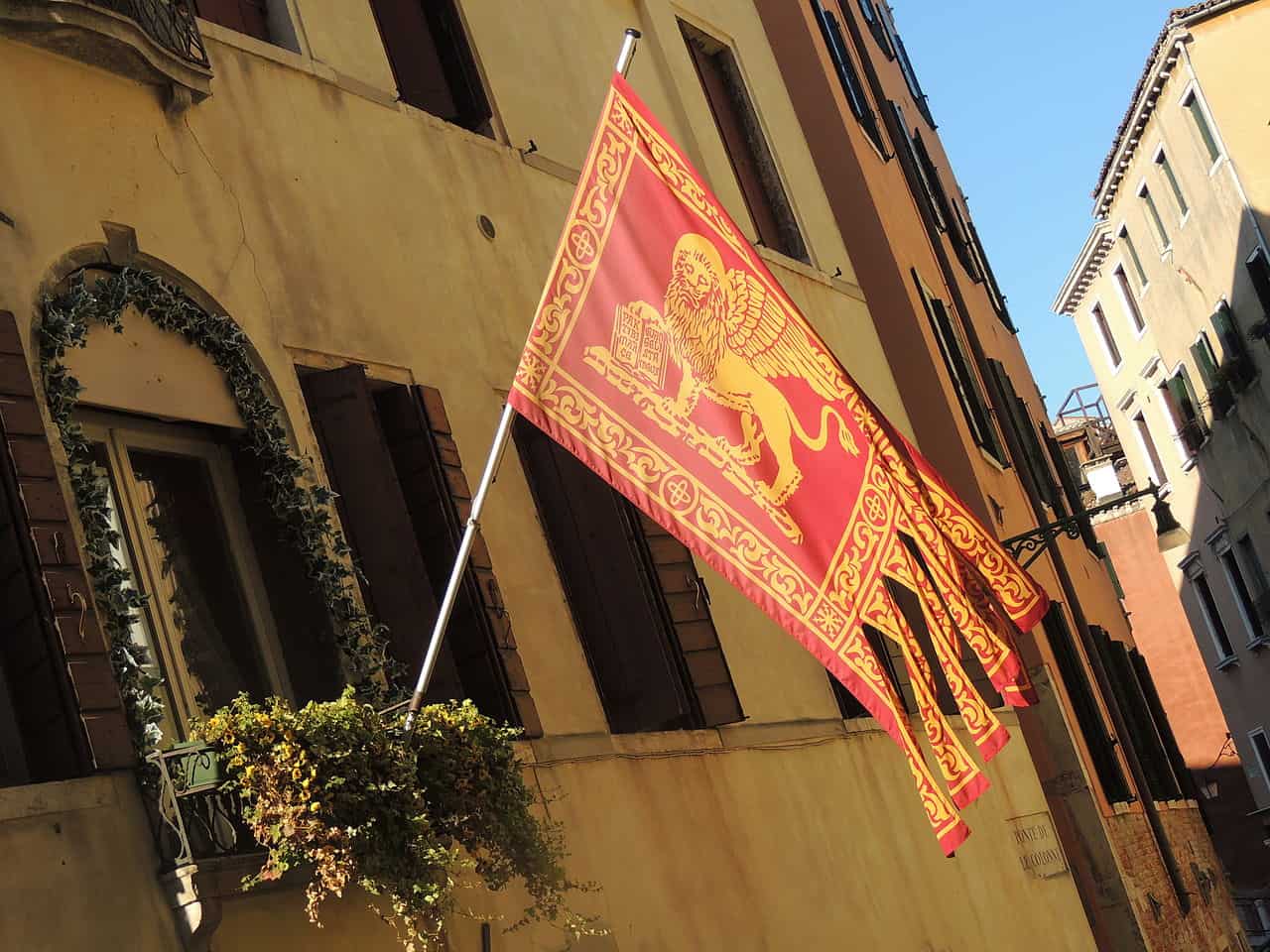
The most general version of the Venice flag shows the Lion of St. Mark holding an open book.
Bearing the Latin inscription ‘Pax tibi Marce Evangelista Meus’ on the book cover, this version is only one of the several existing ones in the city. Original flags should always have the six distinct fringes and should never be independent nor cut.
The largest square in Venice is St. Mark’s Square or Piazza San Marco.
Also known as the Square or la Piazza, the ultimate public square has elegantly uniform architecture on three of its sides. A source claimed that Napoleon named Piazza San Marco as the ‘drawing room of Europe.’
The most famous church in Venice and well-known in the world is St. Mark’s Basilica or Basilica di San Marco.
Standing as a popular example of Italo-Byzantine architecture, the Basilica known today was finished in 1071. Several additions like mosaics, sculptures, and other ceremonial objects have increased the abundance of the church throughout the centuries.
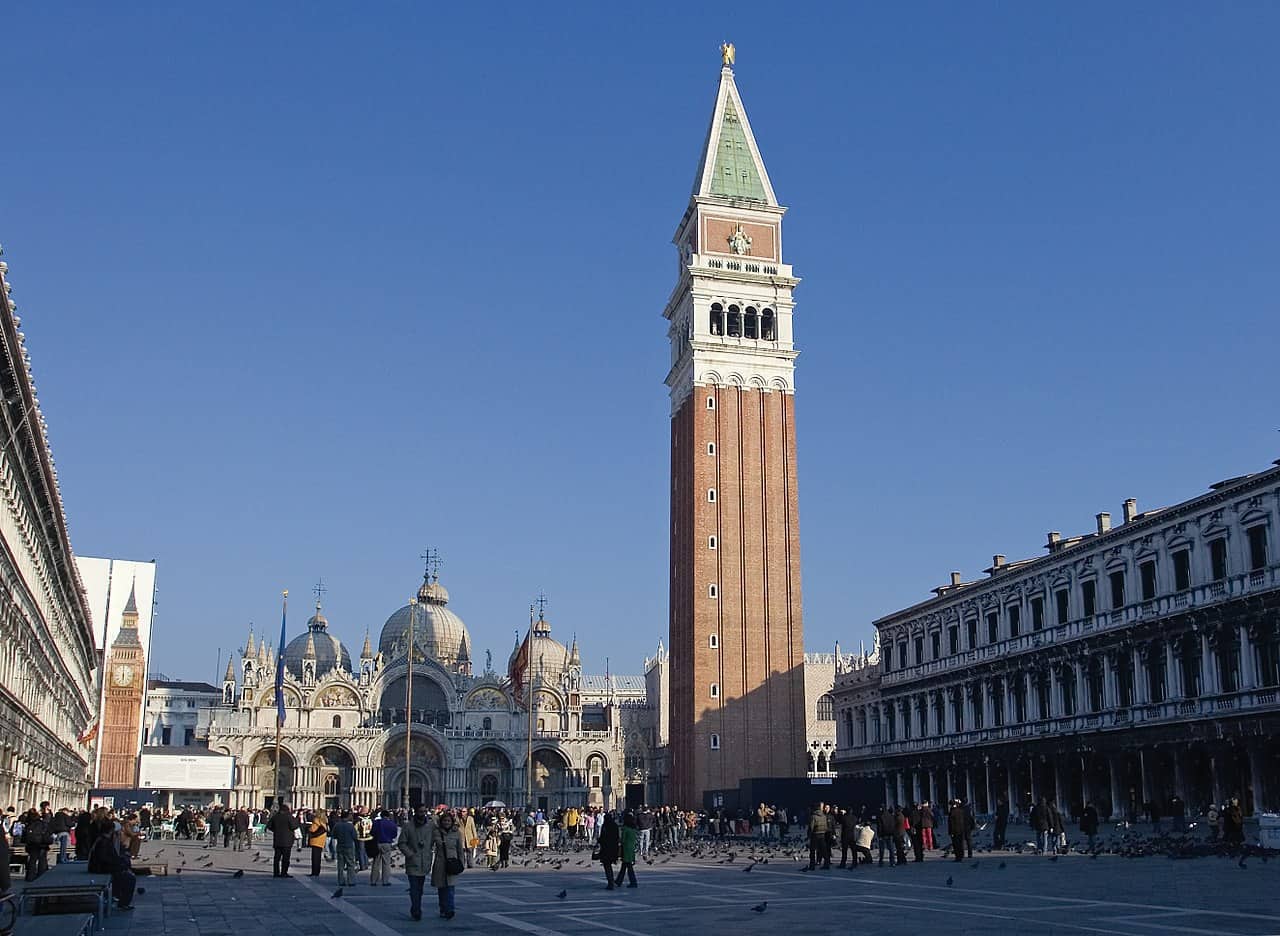
The famed San Marco bell tower is also in Venice, Italy.
It was originally built in the 1100s but was rebuilt in the 1900s following its collapse due to a neglected crack on its north wall. Still, many people believe that the tower holds the best view of the city of Venice.
The Doge of Venice lives in The Doge’s Palace, another main landmark in the city.
A Gothic architecture masterpiece, the palace shelters the political bodies of the state. The list includes the Doge themself, the Great Council, as well as the Council of Ten. Within this lavish complex stands the administrative offices, courtyards, law courts, ballrooms, and ground floor prisons.
Being a gondolier is a highly desired job in Venice, Italy.
Applicant must be born Venetian to qualify for the only 425 issued licenses. Apprenticeships require more than 400 hours of training. When a licensed gondolier dies, the license would go to the beneficiary who would then decide the replacement.
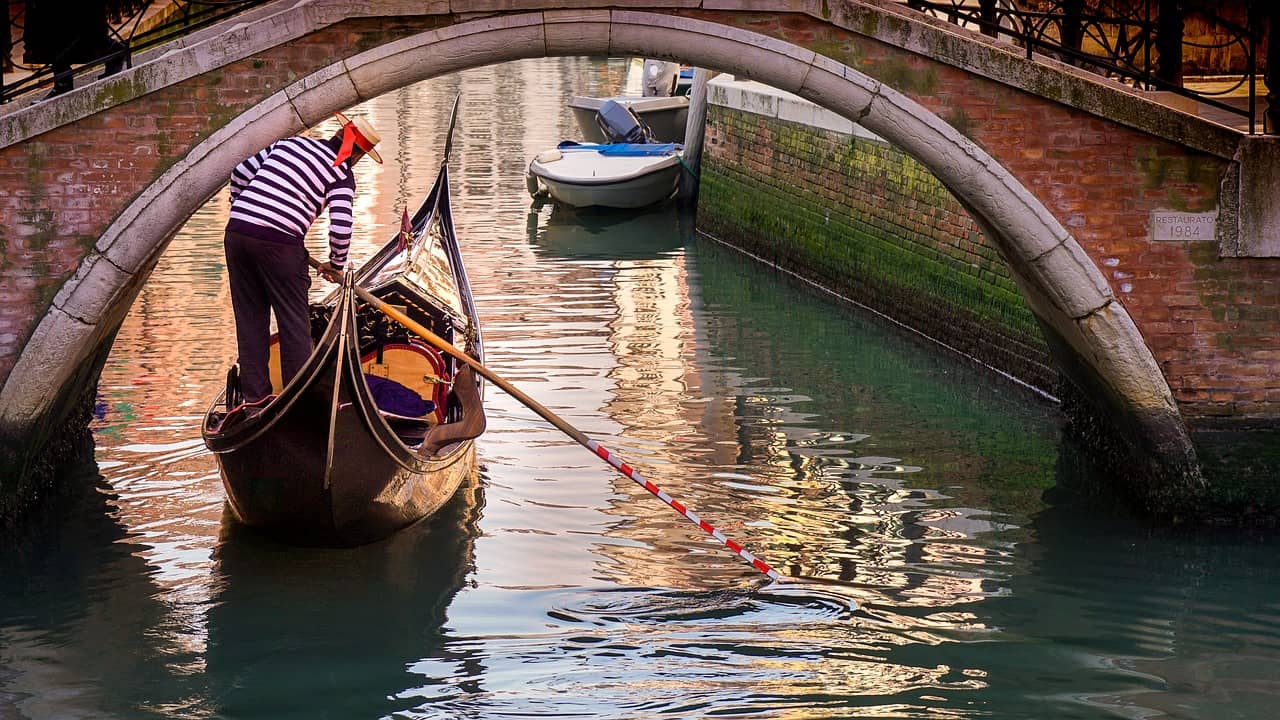
The Venice glass industry was a deadly mercantile back then.
Entrepreneurs would send assassins to eliminate nonnative glassworkers who helped France set up their individual glass industry.
The global term ‘quarantine’ originated in the Venetian word ‘quaranti giorni.’
During the Black Death era from 1346 to 1353, Venice required ships to wait outside their port to ensure that none of the passengers have the infection. This 40-day period is called the ‘quaranti giorni.’
An engineering project launched in the city aimed to prevent town floods in Venice, Italy.
This engineering project involves the creations of moveable barriers that would prevent floodings. It is designed to control the ‘acqua alta’ tides which refer to tides rising to 9 cm above their regular height. When this phenomenon occurs, the city floods.
The Venice Carnival is an annual celebration that the city holds before Ash Wednesday of the Lent.
For two weeks, people wear the world-renowned Venetian masks as hiding their identity allows them to socialize with other factions without the fear of judgment. Catholics in the city take advantage of the Carnival to eat all the meat they could before closing for the Lent on Shrove Tuesday.

The esteemed Venice Film Festival is the oldest film festival in the world.
Count Giuseppe Volpi di Misurata founded it in 1932. Moreover, the Venice Biennale is another important event in the arts calendar of Venice, Italy.
Was this page helpful?
Our commitment to delivering trustworthy and engaging content is at the heart of what we do. Each fact on our site is contributed by real users like you, bringing a wealth of diverse insights and information. To ensure the highest standards of accuracy and reliability, our dedicated editors meticulously review each submission. This process guarantees that the facts we share are not only fascinating but also credible. Trust in our commitment to quality and authenticity as you explore and learn with us.
